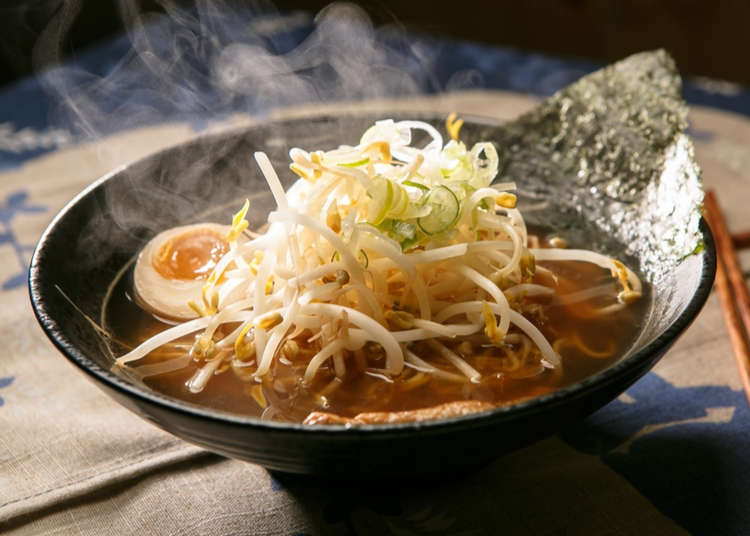
Mastering the Art of Ordering Ramen in Japan: Insider Phrases and Tips from Locals
- Written by: Naho Jishikyu
Ramen is a beloved dish in Japan, with countless variations and regional specialties to explore. But if you don't speak Japanese, ordering ramen in a local eatery can be daunting.
Fear not, though, as we've got you covered with insider tips and secret phrases used by locals to make your ramen-ordering experience in Japan a breeze.
There are many different food shops throughout Japan, and ramen is one of the most popular. There are even TV shows, and local events held to decide the “King of Ramen” through competitions dedicated to this popular national dish of Japan.
The basic elements of ramen are noodles and broth. Not only are there various types of noodles that differ in thickness, but there are also different soup broths, such as pork bone and seafood broth, as well as a wide variety of toppings, each with its own unique term. There are so many different ramen terms they could fill an entire dictionary.
So without further ado, let’s take a look at how to order ramen in Japan. Just by knowing these basic ramen terms, you can ensure a more enjoyable time during your next ramen shop visit!
Start with the broth
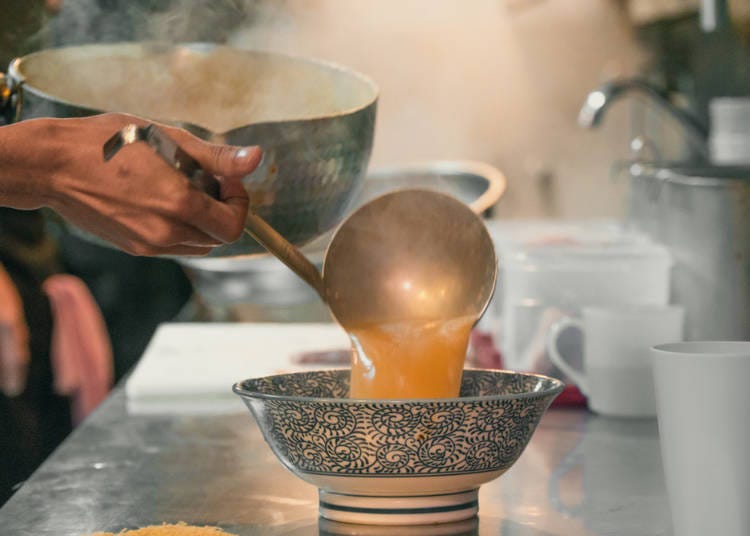
The soup broth used in each type of ramen can vary in ingredients depending on the shop. While there are a number of varieties of ramen soup bases, the main are:
・Shoyu (soy sauce) - 醤油
・Shio (salt) - 塩
・Miso - 味噌
・Tonkotsu (pork bone) - 豚骨
Because the composition of the soup is unique to every shop, which is the very point of ramen, some shops have adopted the "W soup" system.
"W soup" is a soup that combines animal-based broths, such as pork bone and chicken ribs, with seafood-based broths, such as kelp and bonito. Because the ratio of each separate broth is different, they are mixed together right before serving.
Although this method takes some time and effort to fully incorporate the taste of both the animal- and seafood-based soups, the commitment to this perfection is exactly what brings out the uniqueness of each shop.
Next, the noodle firmness: from “Bari-wara” to “Hari-gane”
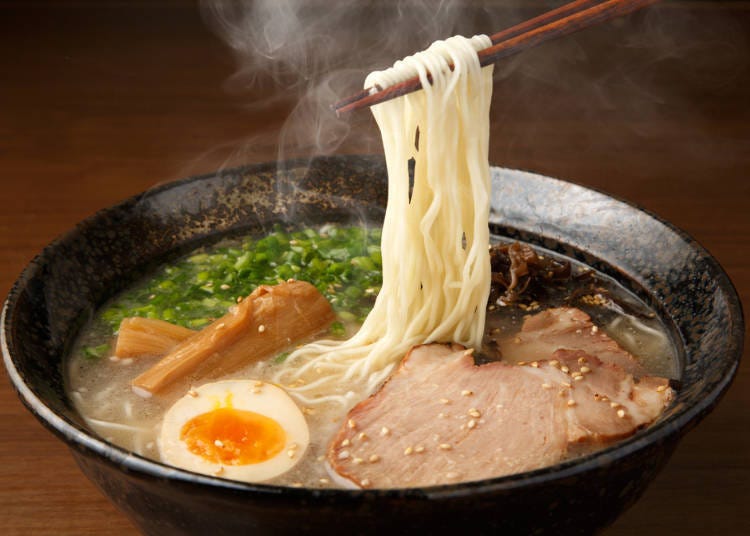
There are various types of broths used in Japanese ramen, such as soy sauce, miso, and salt, but of particular importance, especially in Hakata pork bone ramen, is the level of noodle firmness.
The firmness of the noodles changes according to the length of time boiled, and each level has a specific name.
From most soft to most firm:
・“Bari-yawa” (extra soft)
・“yawa” (soft)
・“futsuu” (medium)
・“kata-men” (firm)
・“bari-kata” (extra firm), and
・“harigane” (extra-extra firm).
You will often be asked your preference when ordering your ramen in Japan, so these terms are very useful to remember.
The word “bari,” as used in “bari-yawa” and “bari-kata,” translates to “very” in the Hakata dialect. Bari-yawa, which is boiled for the longest amount of time, seems to be the least recommended, as many find it to be too soft.
“Futsuu,” or medium, is the average level of firmness. If you prefer more chewy noodles, then bari-kata and harigane are recommended.
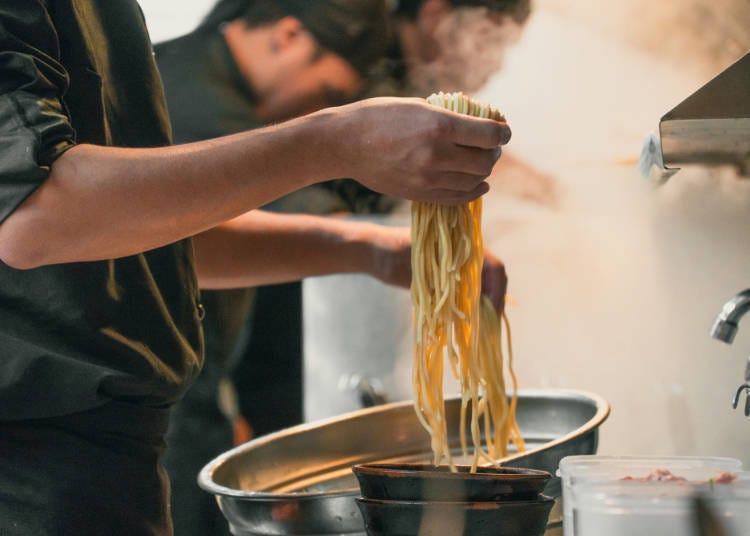
For connoisseurs and advanced eaters of this delicacy, you also have the option to order “kona-otoshi,” in which the noodles are only passed through the water for a few seconds to remove any flour powder left on them, or “yuge-doshi,” in which the noodles are not even boiled, rather passed through steam.
Because the length of time the noodles are cooked may vary from store to store, if you are up for the challenge, you may want to ask for the staff’s recommendations.
Add some standard ramen toppings: Char siu, Menma, Aji-tama
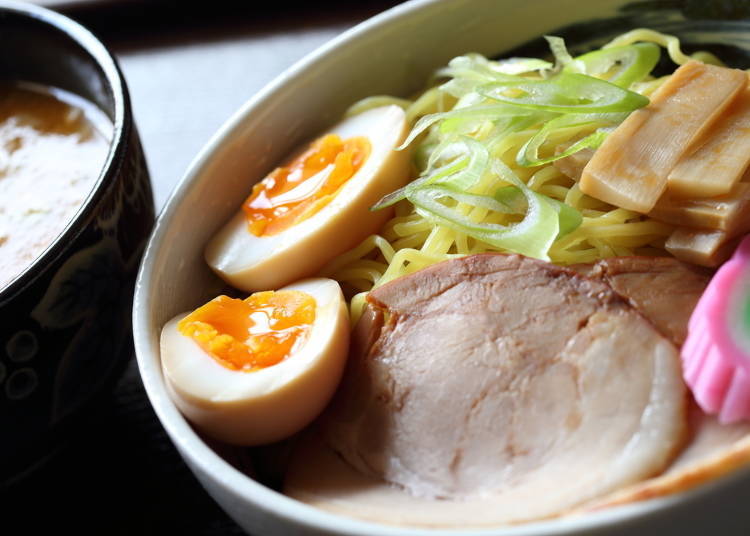
The noodles and broth may be what brings the ramen to life, but let’s not forget about all the additional toppings of your choice that can be added to your ramen order!
Here are some of the basic names of toppings commonly found in ramen shops in Japan. Most shops usually have their own recipes, so the available toppings also show the features of the shop.
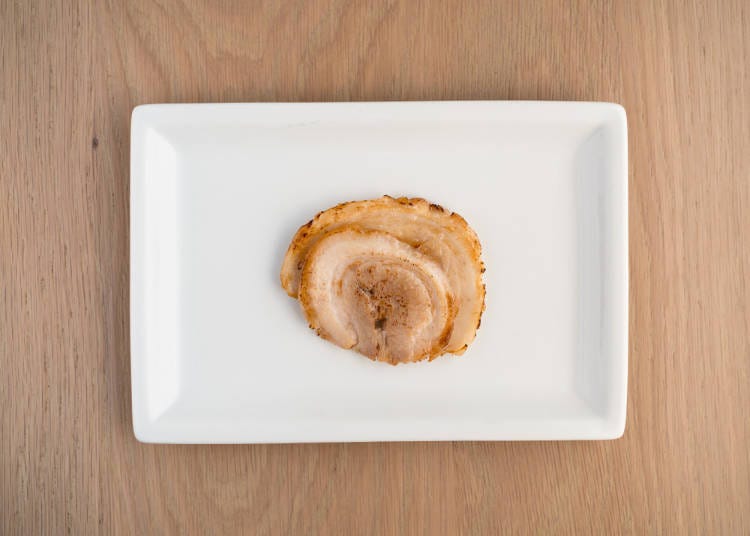
"Char siu" (pronounced: chashu) is a dish that includes roasted pork. In Japanese, it is also known as "yaki-buta."
Many ramen stores use boiled pork instead of roasted pork. The pork is tied with a string, and only the surface is roasted in an oven or a pan, and then simmered in soy sauce broth. Other boiled items can be added to the broth, but how it is made and flavored varies by shop.
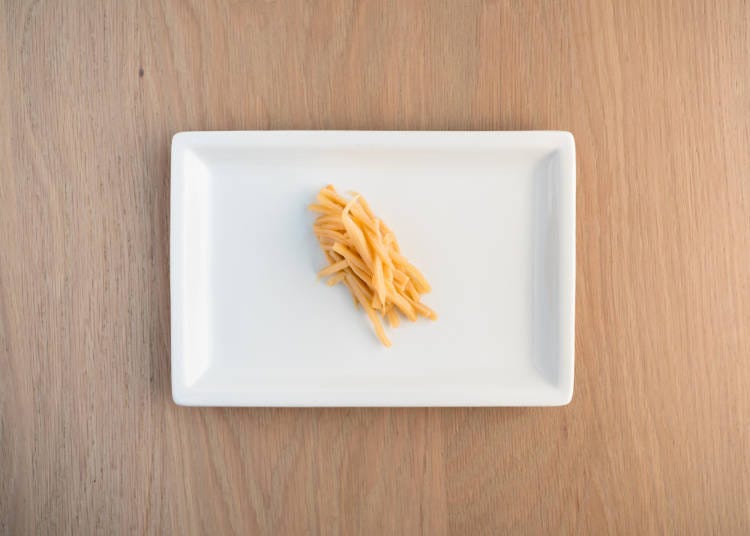
“Menma” is made by fermenting bamboo shoots with lactic acid and is sometimes called “shinachiku.” It is a common topping for soy sauce ramen. The flavor also varies by shop, and it is characterized by its crisp texture.
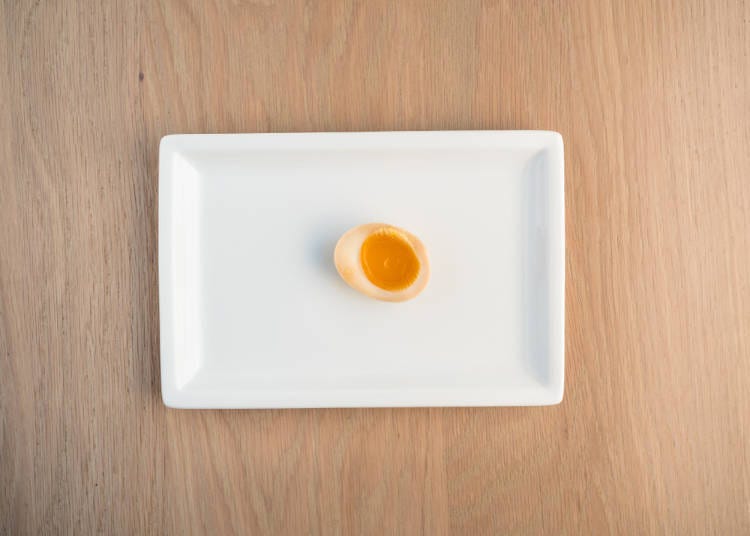
“Ni-tamago,” “ajitsuke-tamago,” and “aji-tama” are boiled eggs soaked in flavoring. Nowadays, it seems it is also common to order them half-boiled. As they go well with any soup regardless of flavor, these kinds of eggs have become a staple as a ramen topping and are a popular addition to many people’s orders.
Tip: When you want to order a lot of noodles, ask for "Oomori" or "Kaedama"
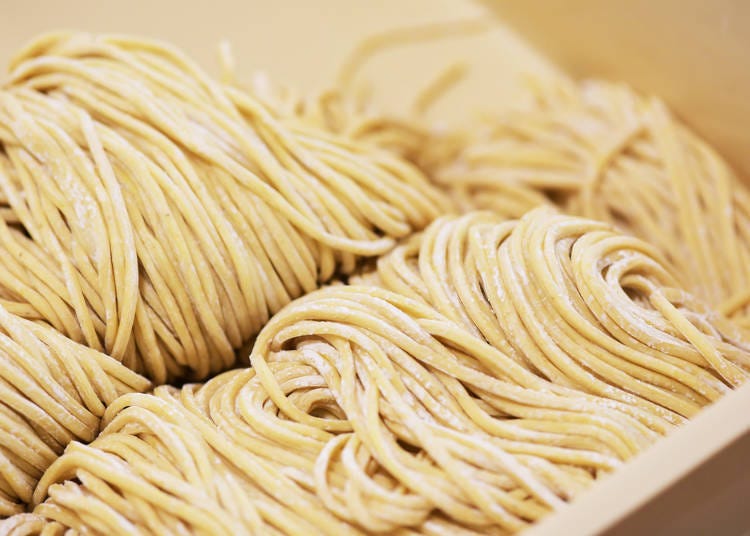
Is one serving of ramen not enough? Want more noodles?
In that case, you may want to ask for "Oomori" when you place your order for ramen in Japan, which adds more noodles to your serving when ordering.
Some shops even offer this size upgrade for free, but additional charges can apply, so be sure to double-check before placing your order.
There are also some places, such as Hakata Ramen and Nagayama Ramen shops, where you can enjoy “Kaedama,” where you can order a refill of only the noodles.
This system is prevalent in ramen shops that use fine noodles. Because thin noodles tend to grow in size while eating, you can ask for the noodles little by little.
When ordering "Kaedama" at Hakata Ramen shops, you will be asked your preference of firmness for the noodles so that you can enjoy a variety of noodle types each time. For example, you can start with “bari-kata” hard noodles and ask for “bari-gane” noodles for your next top-up.
Tip: Ordering ramen variants: "Atsumori" and "Soup-wari"
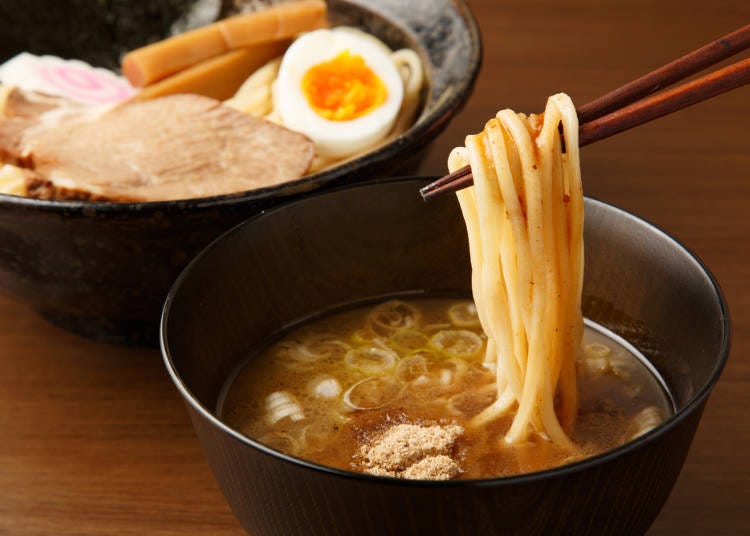
You probably think of noodles soaking in a hot soup broth when you think about ramen. However, another option is called "Tsukemen," or “dipping noodles,” in which the noodles and the soup are served separately.
Unlike regular ramen, in which freshly-boiled noodles are poured directly into a hot broth, tsukemen is a style in which the noodles are boiled in water and then served in a separate bowl. You can adjust the proportion of broth put in the noodles yourself, or you can enjoy the taste and texture of the noodles alone by not putting in any broth at all.
One way to enjoy tsukemen is called "Atsumori." After the boiled noodles are briefly chilled with cold water, the noodles are then passed once again through hot water again and served with a hot dipping sauce. Because the noodles are served warm, and the dipping sauce is also hot, the dish won’t chill quickly and can be enjoyed warm until the end.
In addition, we also recommend "soup wari” (soup split), in which the remaining dipping sauce is diluted with hot soup broth. Depending on the shop, you can ask a shop staff member for a split soup. This makes it easier to enjoy the leftover dipping sauce by diluting it with broth and drinking it as a soup. By all means, please give this option a try if you want to enjoy the taste of the soup to the very last drop.
Tip: Good-to-Know Ramen Term: "Se-abura Chaccha Kei"
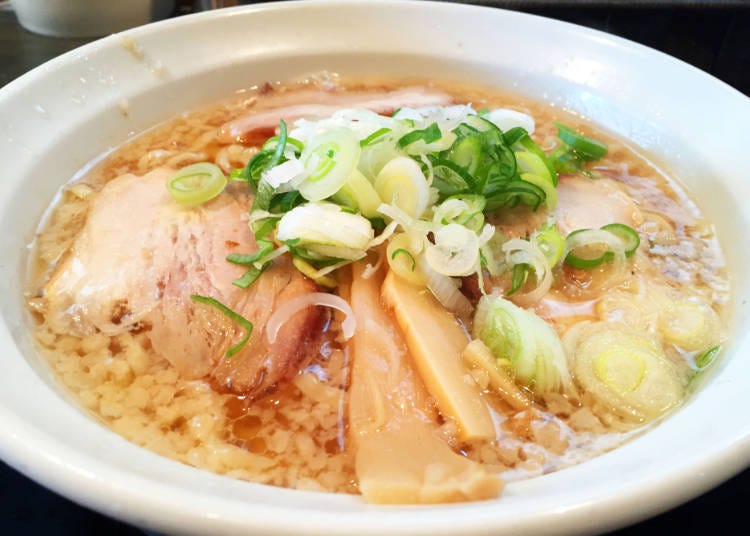
Recently, one of the ramen terms that even people who are not particularly fans of ramen may have heard at least once is the term, "Se-abura Chaccha Kei." This is a style of ramen in which the boiled pork fat is cooked down and sprinkled on top of your dish through a strainer.
"Chaccha" comes from the sound and gesture made when the back fat in the strainer is sprinkled on your ramen. This style was designed to enrich the soup, and gives it a thick, oily taste. Observing the performance of the staff using this method is another thing to enjoy during your visit to a ramen shop.
English translation by Krys Suzuki
Naho has been working as an editor and writer for over 17 years. After editing various materials such as manga, novels, and magazines, she became a freelancer. She is skilled in reporting and writing about food, sightseeing, and drama reviews while also providing web strategy consulting for food and beverage companies. As a result, she is always up-to-date on new products and trends in Japanese cuisine and conveys them in an understandable manner to people of all ages and nationalities through LIVE JAPAN.
*Prices and options mentioned are subject to change.
*Unless stated otherwise, all prices include tax.
Popular Tours & Activitiess
Recommended places for you
-

Make Your Japan Trip Unforgettable! Explore "OSHI MAP" – Now Free and Unlimited
by: Guest Contributor
-

These Tokyo Subway Stamps Are Free, Exclusive, and Weirdly Addictive
by: Guest Contributor
-

Only in Tokyo? A Legendary Manga Artist's New Masterpiece Is Hiding Underground
by: Guest Contributor
-

New in Ginza! Air BicCamera Ginza Opens with a Faster, More Convenient Shopping Experience
by: Guest Contributor
-
Ad

[Tokyo, Ueno] Journey to the Sacred Grounds of the Tokugawa Shoguns: Join the "EDO SHOGUN’S LEGACY TRAIL TOUR" – Where Special Access, Modern Art, and Digital Innovation Converge
by: Guest Contributor
-
Ad

Discover the "Miraculous Forest" in the Heart of Tokyo: The Institute for Nature Study (9 Minutes from JR Meguro Station)
Inspiration for Accommodations
-

Enjoy Mt. Fuji from the Comfort of Your Room! Recommended Ryokan with Mt. Fuji View
-

Stay Near the Cherry Blossoms! Hotels for Cherry Blossom Viewing in Tokyo
-

Family-Friendly Hotels with Free Shuttle to Disneyland: Convenient Access for a Magical Stay
-

Top Ranked Hakone Hotels with Mt. Fuji View: Enjoy Stunning Scenery from Your Private Space
-

Convenient Tokyo Hotels with Airport Shuttle: Ideal for Families and Heavy Luggage
-

Stunning Tokyo Tower View Hotels: Enjoy Spectacular Scenery from Your Private Space
-

Convenient Asakusa Hotels with Kitchens: Ideal for Extended Family Visits
-

Experience Luxury: Hakone's 10 Best Five-Star Accommodations
-

Enjoy Mt. Fuji Autumn Leaves! Top Hotels Near the Popular Autumn Leaves Corridor
-

Experience Hakone Fall Foliage from Your Room with Stunning Views
-

Meat dishes in Tokyo
-

What to Pack for Japan: 8 Essential Things for a Hassle-Free Trip
-

Japan Braces for Snowstorm Shock Thru January 10—Here's How to Travel Safely
-

Exploring Tokyo: 4 Must-Visit Spots around Tokyo Station
-

Tokyo 1-Day Itinerary: Around Ikebukuro's Incredible Anime and Manga District!
-

16 Secrets About Mt. Fuji, the Symbol of Japan: Even Japanese People Don’t Know That?!
by: Guest Contributor
- #best ramen tokyo
- #what to buy in ameyoko
- #what to bring to japan
- #new years in tokyo
- #best izakaya shinjuku
- #things to do tokyo
- #japanese nail trends
- #what to do in odaiba
- #onsen tattoo friendly tokyo
- #daiso
- #best sushi ginza
- #japanese convenience store snacks
- #best yakiniku shibuya
- #japanese fashion culture
- #best japanese soft drinks
























